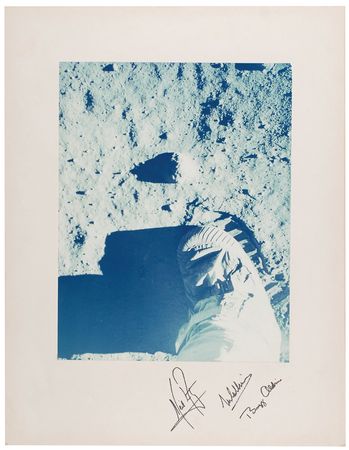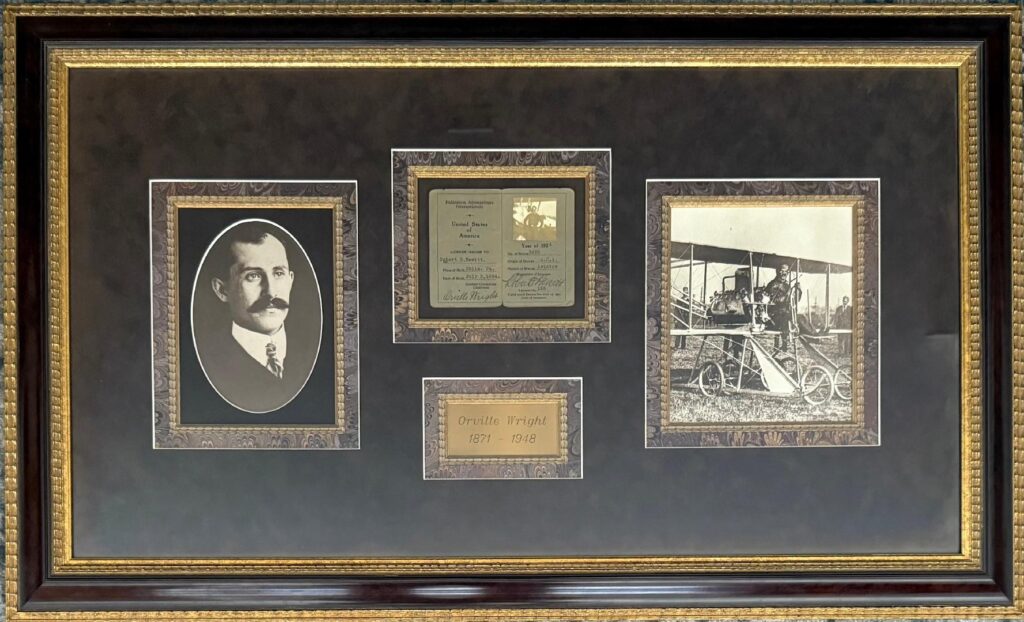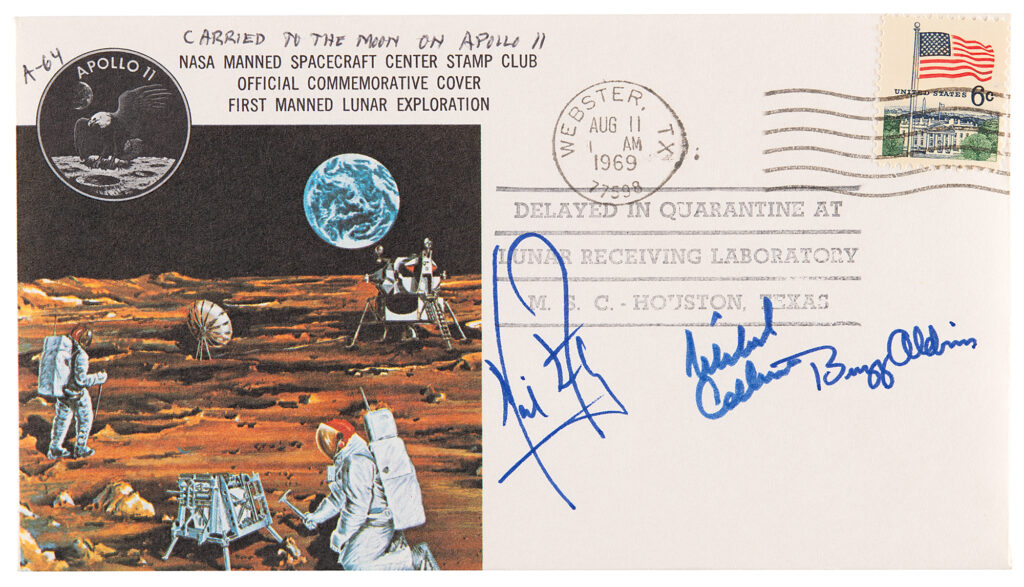AMELIA EARHART GIVES HER TECHNICAL ADVISOR PERMISSION TO REFILL HER VEGA AIRPLANE IN WHICH SHE WOULD ACCOMPLISH HER RECORD SETTING 1935 HAWAII-OAKLAND SOLO FLIGHT.
EARHART, AMELIA. 1897-1937. A fabulous and historic piece of aviation history! Autograph Document Signed (“Amelia Earhart”), 1 p, 4to, [Rye, New York], October 6, 1934, with original transmittal envelope and Tax Commission of Ohio Motor Vehicle Fuel Tax Refund Invoice in Earhart’s name for 142 gallons of aircraft fuel.
This amazing association between Earhart, Mantz (the most famous stunt pilot ever) and her Vega airplane is incomparable. The document reads “Please supply any gas or oil needed for my Vega NR9654 and charge to me at Rye, N.Y. Mr. Paul Mantz is the pilot in charge and is authorized to contract for supplies.”
Paul Mantz and Amelia Earhart
In late 1934, Mantz became Amelia Earhart’s technical advisor. Earhart, a pioneering female aviator, had enjoyed some success in being the first woman on a trans-Atlantic flight in 1928, and then the first woman to fly the Atlantic solo in May 1932. She had done so in a Lockheed Vega, 5B (N7592, msn 22), she purchased in March 1930, and continued her record setting with a transcontinental flight from Los Angeles to Newark flight in August 1932. She purchased the Vega, NR9654 , refered to in our document, and enlisted Mantz as her technical advisor. Under his tutelage and planning, Earhart accomplished a January 1935 Hawaii-Oakland solo flight and, three months later, a flight from Los Angeles to Mexico City.
Mantz’s marriage to his wife, Myrtle suffered from his frequent absences, the lifestyle he maintained with both the Hollywood set and his work with Earhart, and some basic insecurities of his wife. When she filed for divorce in 1935, she made very public allegations about the relationship between Mantz and Earhart, though Mantz always maintained that only a professional relationship existed between he and Earhart.
Meanwhile, in May 1935, Earhart flew from Mexico City to New York, another record setting hop. In September 1935, she and Mantz flew her Vega in the Bendix transcontinental race. But shortly before that 1936 race she had taken delivery on a new Lockheed 10E Electra (NR16020) and, with Mantz as instructor, received training to fly the airplane. A round-the-world flight was planned for the spring of 1937 with Mantz and Earhart arranging for modifications to the Electra for additional fuel tanks and navigation equipment. On March 17, 1937, Earhart, Mantz, and navigators Fred Noonan and Harry Manning, departed Oakland for Wheeler Field in Hawaii, on the first leg. Upon departing Hawaii for Howland Island, however, on March 20, the heavily-loaded Electra, with Noonan and Harding aboard, ground looped and a landing gear collapsed. The flight had to be aborted as the Electra was disassembled and shipped back to Lockheed at Burbank for repairs. Those repairs were completed on May 19 and Mantz and Earhart test flew the aircraft the next day on a flight to Oakland and back. That night Mantz left Burbank to participate in a competition in the mid-west. Apparently unbeknownst to him, Amelia Earhart and Fred Noonan, along with McNeeley and Earhart’s husband, George Putnam, quietly departed Burbank on May 21, on what became the first leg of their second attempt at the round-the-world flight, this time traveling from west to east. Earhart and Noonan departed Miami on June 1, heading eastward over the South Atlantic. They progressed successfully as far as Lae, New Guinea. They departed Lae on the morning of July 2, 1937, and never landed at Howland Island. Their fate has remained an unsolved mystery to this date, though one suspects it was simply getting lost and running out of gas. Mantz remained at the center of the frenzy to find her, and through the years he grew increasingly frustrated as the stories and fables about her last flight became more and more bizarre. Why Earhart apparently left Mantz in the dark as to the details of her final trip, and what his advisor status was at that point remains unknown.




